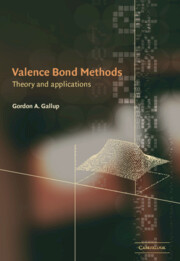Book contents
- Frontmatter
- Contents
- Preface
- List of abbreviations
- I Theory and two-electron systems
- 1 Introduction
- 2 H2 and localized orbitals
- 3 H2 and delocalized orbitals
- 4 Three electrons in doublet states
- 5 Advanced methods for larger molecules
- 6 Spatial symmetry
- 7 Varieties of VB treatments
- 8 The physics of ionic structures
- II Examples and interpretations
- References
- Index
1 - Introduction
Published online by Cambridge University Press: 13 August 2009
- Frontmatter
- Contents
- Preface
- List of abbreviations
- I Theory and two-electron systems
- 1 Introduction
- 2 H2 and localized orbitals
- 3 H2 and delocalized orbitals
- 4 Three electrons in doublet states
- 5 Advanced methods for larger molecules
- 6 Spatial symmetry
- 7 Varieties of VB treatments
- 8 The physics of ionic structures
- II Examples and interpretations
- References
- Index
Summary
History
In physics and chemistry making a direct calculation to determine the structure or properties of a system is frequently very difficult. Rather, one assumes at the outset an ideal or asymptotic form and then applies adjustments and corrections to make the calculation adhere to what is believed to be a more realistic picture of nature. The practice is no different in molecular structure calculation, but there has developed, in this field, two different “ideals” and two different approaches that proceed from them.
The approach used first, historically, and the one this book is about, is called the valence bond (VB) method today. Heitler and London[8], in their treatment of the H2 molecule, used a trial wave function that was appropriate for two H atoms at long distances and proceeded to use it for all distances. The ideal here is called the “separated atom limit”. The results were qualitatively correct, but did not give a particularly accurate value for the dissociation energy of the H–H bond. After the initial work, others made adjustments and corrections that improved the accuracy. This is discussed fully in Chapter 2. A crucial characteristic of the VB method is that the orbitals of different atoms must be considered as nonorthogonal.
The other approach, proposed slightly later by Hund[9] and further developed by Mulliken[10] is usually called the molecular orbital (MO) method. Basically, it views a molecule, particularly a diatomic molecule, in terms of its “united atom limit”.
- Type
- Chapter
- Information
- Valence Bond MethodsTheory and Applications, pp. 3 - 22Publisher: Cambridge University PressPrint publication year: 2002



